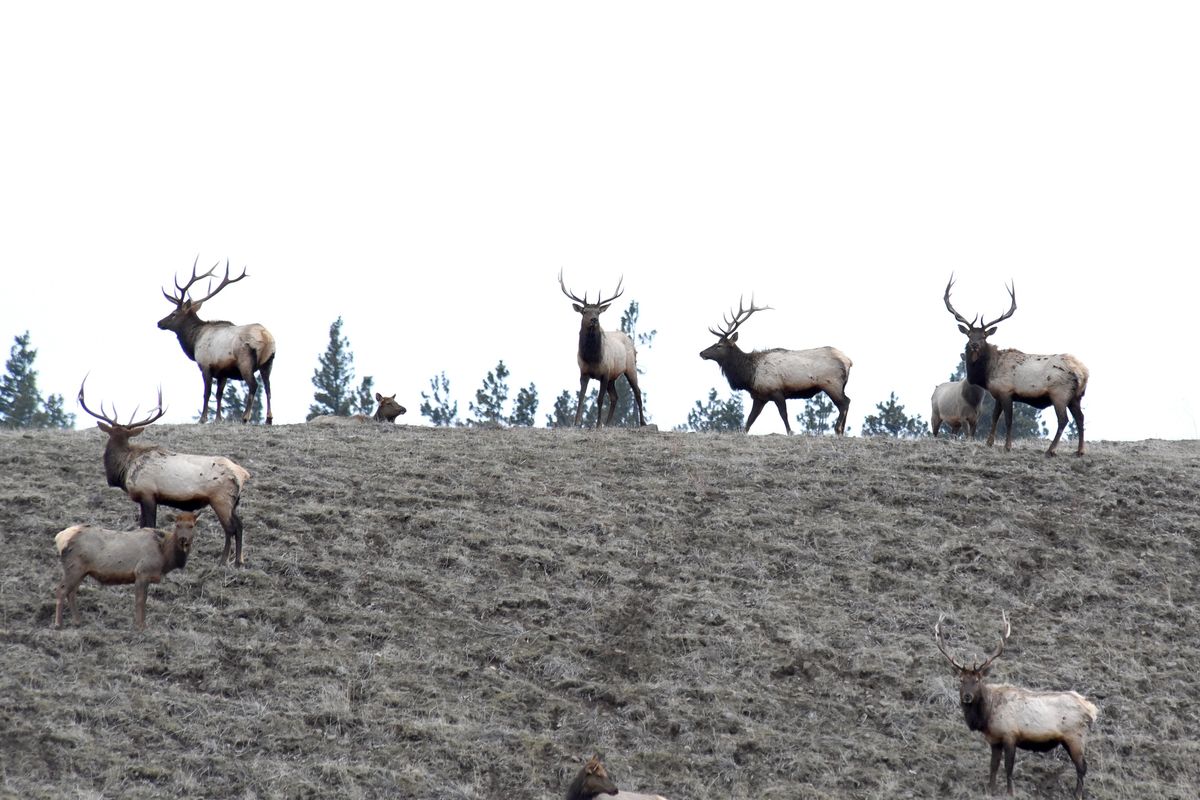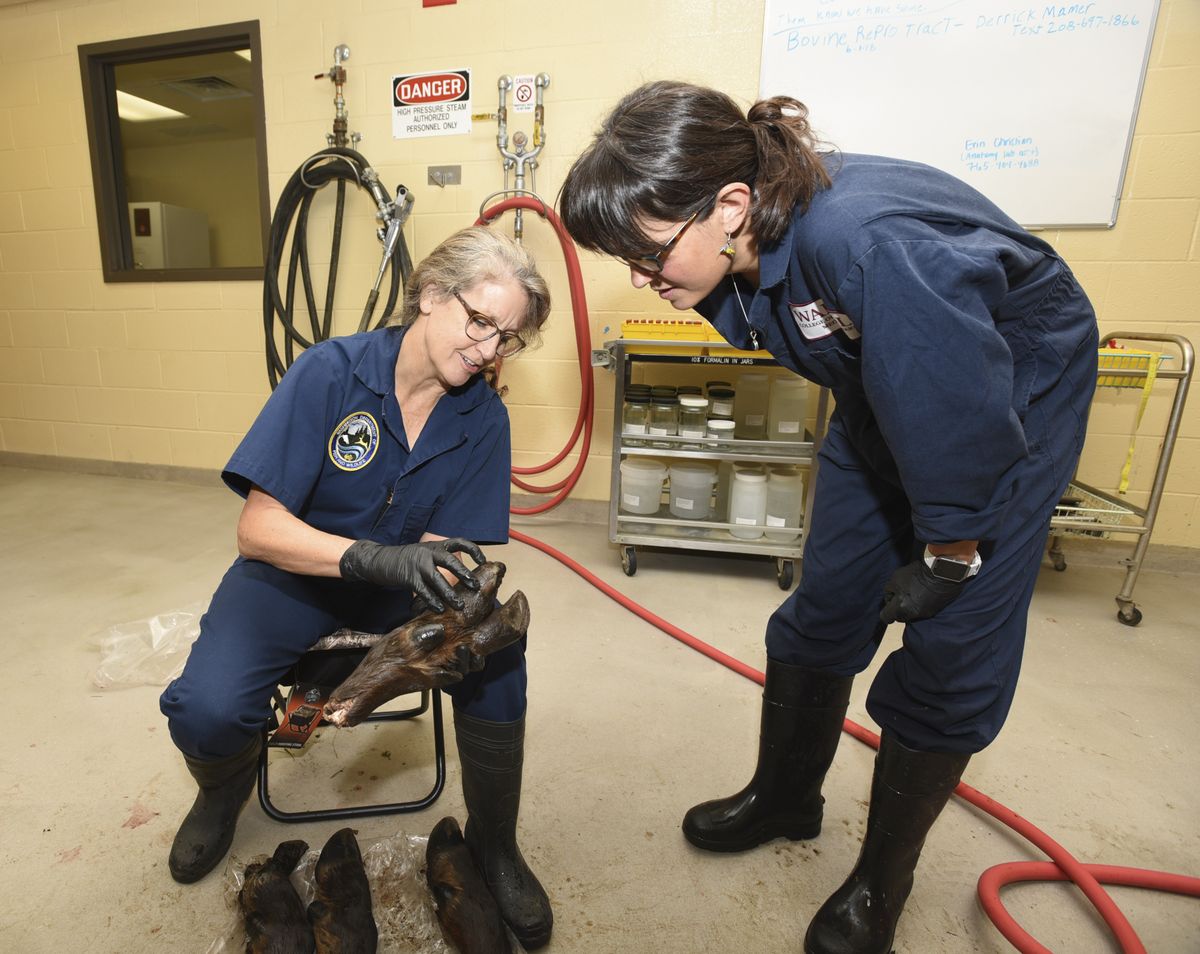Scientists battle hoof disease with clear eyes
Elk congregate at a winter feeding station near Ellensburg. Researchers at Washington State University are trying to find a cure or treatment to the mysterious elk hoof disease that has infected animals in Washington, Oregon, Idaho and California. (Henry Moore Jr./WSU)
LEWISTON – Scientists at Washington State University said their research into elk hoof disease is aimed at finding strategies that can help wildlife managers control its spread and that eradicating the debilitating illness is likely impossible.
“We would like to eradicate, to wipe this disease off the face of the planet, but we have to keep our objectives realistic,” said Magaret Wild, a professor at the College of Veterinary Medicine who is leading the university’s effort to learn more about the ailment officially known as treponeme-associated hoof disease.
Wild’s team recently established that healthy elk can acquire the disease via contact with contaminated soil. The disease first surfaced in Western Washington several years ago and has been detected in many parts of the state and in north-central Idaho, Oregon and California. No cases have been documented in southeastern Washington, however.
It causes lesions on elks’ hooves that can progress to abnormal growths. It is mostly, but not always, fatal and impairs afflicted elk, making it harder for them to move, find food and escape predators.
With funding from the Washington Legislature, the university hired Wild and built a facility to hold captive elk. During initial trials that were delayed and altered because of a human disease – COVID-19 – researchers applied soil mixed with ground-up tissue taken from the hooves of elk that had died of the illness to the feet of the research animals. The results were conclusive: All four of the animals developed hoof disease, but none of the animals in a control group that had the same treatment, minus the addition of ground-up tissue from previously infected elk, became ill.
Three of the infected elk were euthanized when the disease advanced to the point it would soon cause them significant pain. One of the animals recovered.
Wild said one conclusion from the initial phase of research is the importance of removing the sick animals from the herds.
“If you can remove an infected elk, it also reduces all the future infection that elk could cause by passing the disease on to others,” she said.
Wild said while the presence of treponeme bacteria is believed to be a key to development of the disease, it has not been identified as the definitive cause, and other factors such as condition of the animals, other bacteria or the presence of chemicals such as pesticides may also play a role.
The Washington Department of Fish and Wildlife is encouraging hunters in the western part of the state, the epicenter of the disease, to submit hooves of the animals they harvest to the agency. Under the pilot program, those who participate and submit hooves found to be consistent with signs of the disease will be entered into a drawing for a premium 2022 elk tag.
People in Washington who participate in the state’s Master Hunter program can get a permit that directs them to target animals showing signs of the disease, such as limping and lameness. More information is available at youtu.be/XEYXWtDxH4Q.
Kyle Garrison, an elk specialist at the Washington Department of Fish and Wildlife, said hunters continue to help the agency and researchers track the disease by reporting limping and lame animals they witness or harvest.
“We found hunter reporting is the most efficient method we have come up with for (tracking the spread of the disease),” Garrison said.

